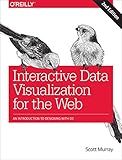Best D3.js Guides to Buy in December 2025

D3.js in Action, Third Edition



Learn D3.js: Create interactive data-driven visualizations for the web with the D3.js library



D3.js in Action: Data visualization with JavaScript



Mastering D3.js



Integrating D3.js with React: Learn to Bring Data Visualization to Life



Interactive Data Visualization for the Web: An Introduction to Designing with D3



D3.js Quick Start Guide: Create amazing, interactive visualizations in the browser with JavaScript



Pro D3.js: Use D3.js to Create Maintainable, Modular, and Testable Charts



D3.js By Example



Developing A D3.Js Edge: Constructing Reusable D3 Components And Charts


In D3.js, correctly placing text labels involves setting the correct coordinates for the text elements within your SVG container. You can use the x and y attributes to position the text relative to a specified point or use transform to move the text to a specific position. Additionally, you can use the text-anchor attribute to align the text horizontally. It is essential to consider the size of your text labels and the overall layout of your visualization to ensure they are placed in a visually appealing manner. Experimenting with different positioning techniques and adjusting the styling of your text labels can help you achieve the desired look and feel for your D3.js visualization.
How to format text labels to show specific data values in d3.js?
In d3.js, you can use the .text() method to format text labels and show specific data values. Here's an example of how you can use this method to display data values in a text label:
- Select the text element that you want to display the data value in:
svg.selectAll("text") .data(data) .enter() .append("text") .attr("x", function(d) { return xScale(d.x); }) .attr("y", function(d) { return yScale(d.y) - 10; }) .attr("text-anchor", "middle") .attr("fill", "black") .text(function(d) { return d.y; });
In this example, we are selecting all text elements, binding the data to the elements, and appending a new text element for each data point. We then set the x and y positions of the text element based on the x and y data values from the dataset. We also set the text anchor to the middle of the text element, the fill color to black, and finally set the text content to the y value of each data point.
You can customize the formatting of the data value in the .text() method by using any JavaScript string manipulation methods or d3.js formatting functions. For example, you can format a data value as a currency value using d3.js formatting functions:
.text(function(d) { return d3.format("$,.2f")(d.y); });
This will format the y value of each data point as a currency value with two decimal places. You can use other formatting options provided by d3.js to customize the appearance of the data values in the text labels.
What is the purpose of using the dx and dy attributes to offset text labels in d3.js?
The purpose of using the dx and dy attributes to offset text labels in d3.js is to position the text labels relative to their usual positions. This allows for fine-tuning the placement of text labels in a visualization, ensuring that they are not obstructed by other elements and improving the overall readability and aesthetics of the visualization. By adjusting the dx and dy attributes, developers can move text labels horizontally (dx) or vertically (dy) within the visualization without changing their original coordinates.
What is the benefit of using text labels with interactive elements in d3.js?
Using text labels with interactive elements in d3.js helps to provide context and clarification to the user. It can make the visualization more intuitive and easy to understand by labeling data points, axes, and other elements. Text labels can also improve the accessibility of the visualization for users with disabilities, such as those who are visually impaired or have difficulties processing visual information. Additionally, text labels can enhance the overall aesthetic and design of the visualization, making it more visually appealing and engaging for the user.
